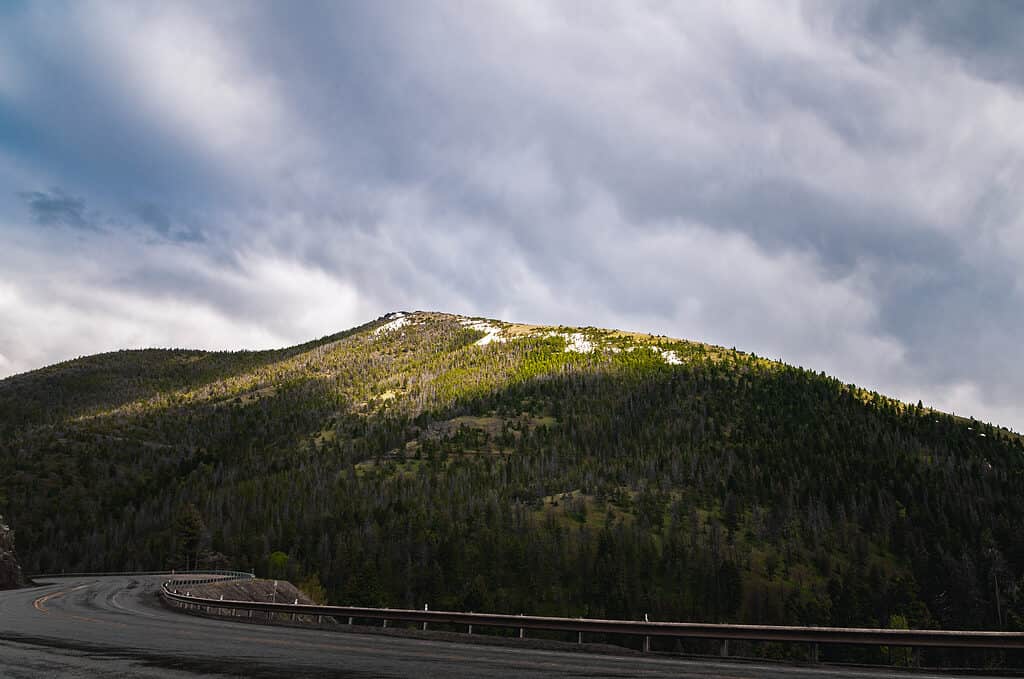Montana is one of the frontier states that still have a reputation for adventure and wonder. This is especially true when it comes to wildlife and natural beauty. In fact, the name “Montana” actually comes from a Spanish word that means “mountainous”! Like many states with a lot of natural beauty, however, there are a lot of extremes. Whether it’s the landscape or the weather, Montana is a land of extremes. Today, we are going to be taking a look at this amazing state to determine the coldest temperature ever recorded in Montana. Let’s get started!
The Coldest Temperature Ever Recorded in Montana

The record low temperature for Montana was recorded at Rogers Pass on January 20, 1954.
©ksnyd_10/Shutterstock.com
Montana has harsh winters and temperatures. It holds the record for the all-time coldest temperature ever recorded in the lower 48 states (excluding Alaska and Hawaii). On January 20, 1954, a temperature of -70° Fahrenheit was recorded at Rogers Pass on the Continental Divide. That officially broke the previous record by a few degrees.
This temperature was recorded by the weather station located at an elevation of 5,470 feet at the 4 K’s mine. That location provided perfect conditions to allow the record to happen in the first place. The conditions leading up to the record included things like high elevation, a saucer-shaped depression, Arctic air sweeping in from the north, and seven days of continuous snowfall, which caused an increase in snow depth from 8 inches to 66 inches.
These factors, combined with the clear and windless night, created the perfect setup for a temperature plunge that was sure to break records. It was still cold in other parts of the state, just not as cold as Rogers Pass! On the same night, Butte recorded a low of -31, Havre -43, Billings -34, Great Falls -37, Helena -36, and Missoula -14 degrees Fahrenheit.
Why Does Montana Get So Cold?

Because of Montana’s cold temperatures, snowfall can be quite heavy there.
©iStock.com/ronniechua
Montana’s extremely cold temperatures are due in part to its location in relation to the Continental Divide. The majority of cold air masses are unable to pass over the Divide. Occasionally, though, when the cold air has enough energy and momentum from the Arctic, it is able to force its way through mountain passes. These passes include Logan Pass, Marias Pass, and Rogers Pass. Further, Rogers Pass is the location of the coldest temperature in the lower 48 states.
This results in western Montana becoming the coldest portion of the state. Additionally, the topography (varying elevations) of Montana’s valleys and mountains traps the cold air and prevents it from moving out. When this happens, the cold air can get stuck around some areas for extended periods and produce prolonged cold snaps. Altogether, these factors contribute to Montana’s reputation for harsh and prolonged winter conditions; one it rightfully deserves!
Snow in Montana
Montana is known for heavy snowfall, with an average of 38.1 inches per year. However, the amount of snowfall can vary greatly depending on location, with the Rocky Mountains in the western half of the state receiving up to 300 inches of snow per year, while the eastern half may only get 20 inches.
Overall, getting used to the snow in Montana is essential to living there!
Wildlife That Can Survive the Cold in Montana

Bighorn sheep have thick fur coats, allowing them to survive the harsh cold of Montana.
©John Raptosh/Shutterstock.com
Montana is known for its harsh winters, but many species of wildlife have adapted to survive the extreme cold temperatures.
One example of a cold-hardy plant in Montana is the fir tree. Fir trees are able to survive in cold temperatures because of their needle-like leaves that reduce water loss, and their specialized bark which is thick enough to protect them from harsh winds.
One old-hardy animal in Montana is the bighorn sheep. Bighorns have thick fur coats that insulate them from the cold and split hooves that allow them to navigate expertly on icy, rocky ledges. They have also developed a strategy of seeking out south-facing slopes during the winter to take advantage of the sun’s warmth.
Additionally, moose have the incredible ability to lower their body temperatures during the winter and conserve energy. This reduces their basal metabolism and decreases their food requirements, allowing them to survive on less food during the cold months. Also, badgers and wolverines can enter a state known as “torpor,” which is a short period of dormancy (almost like hibernation), during the winter. Other animals like bears, ground squirrels, and marmots go into hibernation, lowering their body temperature and slowing down their metabolism, sometimes even grouping together (except for bears).
Up Next…
- Discover the Coldest Place in Montana (-70°F!)
- What Is the Coldest Place on Earth, and Can You Survive?
- Discover the Coldest Place in Colorado
The photo featured at the top of this post is © Emily Kerns/Shutterstock.com
Thank you for reading! Have some feedback for us? Contact the AZ Animals editorial team.






